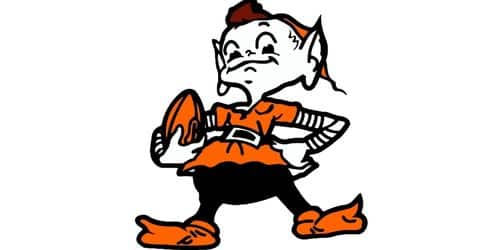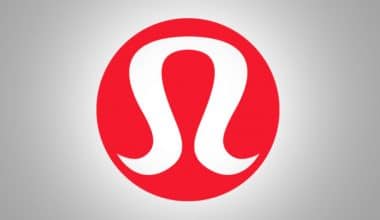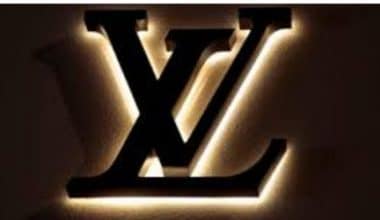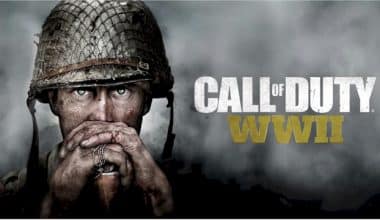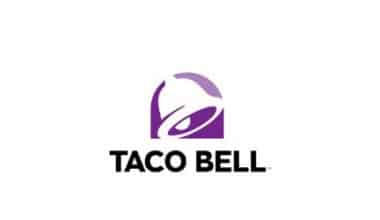It may interest you to know that the Cleveland Browns are an NFL football team representing the city of Cleveland in the NFC North division of the NFL and were founded in 1948. In 1945, industrialist Arthur B. Bride and coach Paul Brown founded the franchise. The franchise is currently owned by Jimmy Haslam, and the value of the Browns was estimated at $2.35 billion in 2020. For more than 50 years, the only thing that has changed about the Cleveland Browns logo is a small detail. For more information, this article will guide you through the history of the new and old Cleveland Browns logo
What Is the Cleveland Browns Logo
The new Cleveland Browns logo is the elf. They have made Brownie the Elf their new midfield logo at FirstEnergy Stadium before their home opener against the Jets on Sunday. In an online poll, fans could choose which logo would be used for home games during the 2023 NFL season. Brownie was chosen as the winner.
What is Cleveland Browns?
The Cleveland Browns are a member of the American Football Conference North. Since 1950, they have been members of the NFL; prior to that, they were a part of the All-America Football Conference. Arthur Bertram Modell opted to relocate the club to Baltimore, but he left all of the Browns’ logo history in Cleveland, so there was a little lull in the team’s storied past during that time. It wasn’t until 1999 that the original franchise was brought back into existence.
The Old Cleveland Browns Logo
In more than 70 years, the Cleveland Browns have had seven logos. One of them was never used. You can divide their whole history into two parts—before 1969 and after 1969. The first time period is the so-called Brownie Elf era, in which artist Dick Dugan drew in a cartoon style and was “awarded” with a soccer ball.
The longest part is the second one. It started when the team put the first orange helmet emblem on in 1970. This version went through a few changes. The developers were looking for a modern design so that the sports that were drawn looked like they did in real life.
1948 – 1958 Cleveland Browns Logo
The original character, Brownie Elf, is on the Cleveland Browns logo. Its name is a play on words: “Brownie” sounds like the team’s nickname, “Browns.” The picture was made by the artist Dick Dugan, who later worked for the Cleveland Plain Dealer as a sports cartoonist.
Elf stands up, and in his left hand, he holds a football. A crown is a sign of power, and it’s on his head. The figure is facing leftward. All of the shapes have a dark border with jagged edges. The style of animation is shown in the way this logo is made.
1959 – 1969 Cleveland Browns Logo
Brownie Elf changed in 1959. He turned to the right, the crown on his head was replaced by a cap, and he held the football in his right hand. His clothes turned black and orange, and his arms and face turned white. Shadows, which are common in animated pictures, were taken away. The character is shown in a rough way, without much detail, and is outlined in black.
1965 (Unused)
When Art Modell bought the Cleveland Browns, he thought the team’s logo was too childish, so he got rid of it. A new logo was made in the middle of the 1960s. It was a dark orange helmet with a white stripe on top and a black outline.
This athletic gear is shown from the side. It has a grey faceguard and a brown “CB” with white trim, which stands for the city and the team’s nickname, the Cleveland Browns. There are no curves in the font. This version of the team’s logo was never used in a game.
1970 – 1985 Cleveland Browns Logo
After the AFL and NFL merged in 1969, the football club got rid of the funny Brownie Elf. In 1970, they used a logo that looks like the one from 1956 that wasn’t used. There were only small changes: three grey dots were taken away, the black outline on the inside was made wider, and the facemask became white. They got rid of the “CB” wordmark because the Cleveland Browns stopped putting the team logo on the helmets and made it their own thing.
1986 – 1991 Cleveland Browns Logo
The new logo for the Cleveland Browns is a 34 view instead of the usual side view. We were able to draw the facemask in detail and in three dimensions by changing the angle. The depth is made clear by the dark lines that run along the white fixtures. On top of the helmet, there are two white and two grey stripes. The color of orange got one shade darker.
1992 – 2005 Cleveland Browns Logo
In 1992, another change to the Cleveland Browns’ logo was given the green light. The shape of the facemask was brought up to date by designers. The colors didn’t change; they just got less bright. In the lower part, a round, white ledge was added as a new element.
2006 – 2014 Cleveland Browns Logo
In 2006, the Cleveland Browns stopped using those boring colors and went back to orange. The only change to this logo is that the facemask is now gray. The stripes didn’t change in terms of their shapes, sizes, or thickness.
2015 – Today
The helmet has changed a lot since 1970 when the current logo was first used. The people who made it tried to keep the most important parts, like the two black and white stripes at the top. Also, they stuck to the original color scheme, which was mostly bright orange.
2015 was the year when the current brand name was chosen. It shows the same helmet that has become an important part of the players’ gear and an important part of the Cleveland Browns’ visual identity.
History of the Cleveland Browns
let’s go through the history of the Cleveland browns:
1946–1949: The Founding of the AAFC
According to history, Arthur B. “Mickey” McBride, a businessman, started the Cleveland Browns in 1946. They were one of the first teams in the All-America Football Conference. Not long after McBride bought the team, he put Ohio State coach Paul Brown in charge as vice president, general manager, and head coach. In 1945, there was a contest to name the team. The most popular name was “Browns,” which was chosen to honor Paul Brown, who was already well-known and popular in Ohio sports. Brown at first didn’t like the name, so the team chose the name “Panthers” from the contest.
But a local businessman told the team that he owned the name Cleveland Panthers from a failed football team in the past, so the name was changed to Browns. How they chose the Browns is unknown. Paul Brown gets credit from the Cleveland Plain Dealer and the NFL Encyclopedia. The team’s media relations office says the name is a condensed form of Joe Louis’ nickname, Brown Bombers. A 1946 contest yielded the name. Brown used his connections to the Ohio State Buckeyes and the Navy (where he coached during World War II) to build the biggest network of recruiters in pro football at the time. He utilized it to assemble a talented NFL squad.
Otto Graham, Lou Groza, Dante Lavelli, Mac Speedie, Marion Motley, and Bill Willis. The Browns won four AAFC titles. In 1948, they were the first team to go an entire season without losing or tying. This was 24 years before the Miami Dolphins’ perfect season. Cleveland won 29 straight, including two ties. They won 18 straight games and the 1947 and 1948 AAFC titles. The Browns only lost four games during the AAFC. They challenged NFL teams but were always rejected.
1950–1956: Joining the NFL
The AAFC collapsed following the 1949 season, and the NFL agreed to take three of its clubs for the 1950 season. The Browns’ first NFL game came against the defending champs. At the time, many believed the Browns were a minor league powerhouse at best. The Browns were determined to join. They destroyed the Eagles’ defense for 487 yards and a 35–10 triumph.
The Browns continued where they left off in the AAFC behind Graham, Motley, and Dante Lavelli. After finishing 10–2, they beat the Giants 8–3 in a playoff game and the Rams (now in Los Angeles) 30–28 in the NFL Championship Game. Since the NFL doesn’t recognize AAFC records, the Cleveland Browns logo is the most successful expansion team in sports history. 1950 Browns weren’t an expansion team. The next year, the Browns went 11-1 and rematched the Rams in the final game. In the fourth quarter, Rams quarterback Norm van Brocklin threw a 73-yard touchdown throw to Tom Fears. First championship loss for the Browns, 24–17.
In 1952, Cleveland went 8–4 and played the Detroit Lions in the NFL Championship Game. Doak Walker’s 67-yard touchdown run helped the Lions beat the Browns 17–7. Ray Renfro had 722 receiving yards and 322 rushing yards that season. The Browns won 11 straight games in 1953 before losing to the Eagles in the last week and to the Lions in the 1953 Championship Game. This year’s game was closer. Lou Groza’s two field goals placed Cleveland ahead 16–10 in the fourth quarter. With less than two minutes left, Detroit quarterback Bobby Layne delivered a 33-yard touchdown throw to Jim Doran.
1957–1965: the Jim Brown Era
Jim Brown, the Browns’ all-time leader in rushing yards, is in the Pro Football Hall of Fame. In 1957, the Browns picked Syracuse fullback Jim Brown, who quickly became the NFL’s leading rusher (and NFL Rookie of the Year) with 942 yards in 12 regular-season games. With a division-leading 9–2–1 record, they returned to the Championship Game versus Detroit. In a 59–14 thrashing, the Lions caused six turnovers and allowed the Browns’ two quarterbacks (Tommy O’Connell and Milt Plum) to throw for only 95 yards. This was the Lions’ last league triumph to date.
In 1958, Jim Brown rushed for 1,527 yards, nearly twice as many as any other running back. This was the first of seven 1,000-yard seasons in his legendary career. The Browns needed a win or a tie against the New York Giants in the final week of the regular season to earn the Eastern Conference title and the opportunity to host the Championship Game. On the first play of the game, Brown sprinted 65 yards to give Cleveland a 7-0 lead. In the fourth quarter, the Browns held a 10-3 lead over the Giants, but the Giants tied the game, and Pat Summerall’s 49-yard field goal in deteriorating weather circumstances sealed the victory for the Giants.
The following week, in a playoff game between the same two teams, the deflated Browns were held to zero points of offense, Brown was limited to eight yards rushing, and the team committed four mistakes in a 10–0 loss.
Art Modell Assumes Ownership (1961)
In 1961, Art Modell bought the team from David Jones, who had previously purchased it from McBride in 1953. McBride had originally owned the franchise. The tension that began to build between Art Modell and Paul Brown as they competed for control of the company was costly. According to the journalist D.L. Stewart, who is quoted in Going Long, a book written by Jeff Miller on the AFL. However, “You can probably guess that Jimmy Brown and Paul did not have a lot in common.” The word on the street was that Jimmy had Modell working for him, and Paul took offense to the rumor.”
Aside from that, the season was rather ordinary. Jim Brown had his sixth straight season in which he led the league in receiving yards, and the team had a solid showing in the standings. However, at 8–5–1, they were still two games off of a spot in the championship. After Paul Brown finished 1962 with a record of 7–6–1, Modell sacked him on January 9, 1963, and one week later, he was replaced by Blanton Collier, who had been his longtime assistant. When Brown took over as head coach, many of the Browns’ younger players, including Jim Brown and Frank Ryan, chafed under Brown’s authoritarian teaching approach. In contrast, Collier handled the club with a much looser grasp.
He also gave Ryan the ability to call his own plays and constructed an offense that was considerably more open. During Collier’s first year as head coach of the Browns, the team started the year by winning their first six games. However, the team suffered a severe midseason collapse that ultimately cost them the Eastern Division title as they finished one game behind with a record of 10-4.
Blanton Collier Era (1963–1970)
The Cleveland Browns have won their second NFL championship (1964)
In 1964, the Browns went 10-3-1 and won their first championship in seven years. They beat the strongly fancied Baltimore Colts 27-0, with receiver Gary Collins collecting three touchdown passes and earning MVP honors. (As of 2011, this was the city of Cleveland’s most recent sports championship.) The following year, again, the Browns made it to the Super Bowl, but this time they lost to the Green Bay Packers.
Jim Brown’s final game in a Browns uniform would be in the 1965 championship game. Due to production delays, Brown was still in England filming scenes for The Dirty Dozen at the start of the ensuing training camp. Brown announced his retirement from football on July 14 in order to focus on his burgeoning acting career. With the development of third-year running back Leroy Kelly, the Browns were able to mitigate the impact of Brown’s departure. Kelly would rush for more than 1,000 yards in each of the next three seasons, leading the league in the last two.
After missing the playoffs in 1966, the Browns bounced back with a 9-5 record the following year. In the first round of the playoffs, however, the Dallas Cowboys beat them quickly, 52-14. The Browns avenged themselves on the Cowboys in the playoffs the following two seasons, winning 30-21 and 38-14. Both teams won, but then they lost badly, which kept them from making it to the Super Bowl.
Logos and Uniforms
#1. Logos
The only team in the NFL without a logo on their helmets is the Browns. But the team has used different logos to promote itself over the years, like the “Brownie Elf” or a Brown “B” in a white football. Art Modell got rid of the Brownie Elf in the mid-1960s because he thought it was too childish, but the new owner has brought it back. The Browns’ helmet got a brown “CB” logo from NFL Creative Services in 1965. There was never a game that used it. Finally, a brown and orange dog is frequently utilized for Browns events because of the fervor of the Dawg Pound area of Cleveland Browns Stadium. But overall, the orange helmet without a logo is still the most recognizable thing about the Cleveland Browns.
#2. Uniforms
The original designs of the jerseys, pants, and socks have mostly stayed the same over the years, but the helmets have changed a lot in big ways.
- Jerseys
Home uniforms are brown (officially “seal brown”) with white numbers and stripes that go from white to orange to white on the sleeves. Therefore, the away uniforms are white with brown numbers and stripes that go from brown to orange to brown. The two orange stripes are about half as wide as the three white or brown stripes. (The original 1946 jerseys had numbers with a block shadow.) When night matches took place during the 1954 season, the players wore an orange third jersey. From 2002 to 2005, the NFL asked teams to make a third jersey.
- Pants
White, with stripes of orange, brown, and orange on the sides (the stripes are of equal width) Brown – brown all over (no stripes). From 1975 to 1983, people wore orange pants with wider brown-white-brown stripes. These pants became a sign of the “Kardiac Kids” era. In 2003 and 2004, orange pants were worn once in a while.
- Socks
The socks were either brown or white with the same striped design as the jerseys. Solid brown with brown jerseys and solid orange with white jerseys (1984), solid brown when worn with white pants (2002 mid-season–2008), and white striped socks with brown pants (2008–present) (2009) On rare occasions, specifically in 2003–2005 and again in 2007, white-striped socks were worn with white jerseys. For three years (2006-2008), brown striped socks were a part of the 1957-style uniform.
Font and Colors of the Emblem
The helmet is an important sporting attribute for all NFL clubs, without exception. But it signifies a lot more to the Cleveland Browns because it has been represented in the team history logo since 1970. If we close our eyes to the most accurate style, the painted helmet seems almost identical to the actual thing. The artists devoted great attention to details, such as the exact shape of the headgear, the number and location of crossbars in the protective mask, and fasteners, to ensure that everything was as near to reality as possible.
There isn’t a single inscription on or around the helmet. This is because the Cleveland Browns’ owners believe it is unnecessary to state the team’s name because the emblem itself is easily recognizable and does not require text modifications.
And this is true if you pay attention to the color scheme. Only one NFL football club presently wears a distinctive orange helmet with dark brown and white embellishments. At least until he replaces or recolors his iconic logo totally.
Colors codes
- Hex color: #311d00
- RGB: 49 29 0
- CMYK: 1 33 85 94
- Pantone: NFL Cleveland Browns (Custom PMS)
Orange
- Hex color: #ff3c00
- RGB: 255 60 0
- CMYK: 2 93 100 0
- Pantone: PMS 2028 C
Browns Unveil New Team Logo
The Cleveland Browns’ original orange and brown colors have stood the test of time. Now, the franchise has chosen a slightly different design that fits better in today’s environment while honoring the past. The official announcement on the Browns’ website says that the new design and colors are to show the spirit of Cleveland: “Our updated helmet logo is reflective of today’s modern Cleveland-the design honors the past while evolving into the future.” The iconic brown and white stripes stand tall over the orange helmet, a new orange color that matches the passion of the Dawg Pound. The new brown facemask represents the strength and toughness of Cleveland. “
According to the release, because 2015 marks the 30th anniversary of the Dawg Pound, the brand saw this as a “unique chance to modernize the symbology.” According to Zac Jackson of Fox Sports Ohio, the new uniform will be on April 14. Also, the new Browns outfits will be available at midnight on April 14th. Hence, team President Alec Scheiner talked to Fred Greetham and Connor Kiesel of Fox Sports Ohio about what fans can expect from the new uniforms:
Scheiner wouldn’t give out any information on the new uniforms — even if there were to be an added color to the scheme, but hinted that the uniform change will be more drastic, in keeping the helmet with no logo. “We’ll move the uniform further ahead than the logo,” Scheiner said. “The fans have also, given us permission to move ahead with the uniform.” Some people didn’t like the new logo since they didn’t notice a difference, such as Wall Street Journal writer Kevin Clark.
What does the Cleveland Browns Logo Represent?
Brown’s helmet with a brown and white interlocking letters “CB” emblem. The letters “CB” stand for both the city and the team’s nickname, Cleveland Browns. Throughout the years, the team has used numerous promotional logos, such as the “Brownie Elf” mascot or a Brown “B” in a white football.
Why did the Cleveland Browns Change Their Logo?
The Cleveland Browns changed their logo to pay homage to the history of the Cleveland franchise. The Browns announced the news after incorporating fans into the decision-making process. Some people may not know what a “brownie” is, but the design was based on the Cleveland team’s long history.
What is Browns’ Mascot Brownie the Elf?
A “brownie” is a legendary creature found in English and Scottish folklore. It’s an elf or fairy who lives in houses and comes out at night to help with duties around the house – basically the ideal roommate. Cleveland Browns have a long and illustrious history as a logo of the Cleveland Browns organization, dating back to the team’s inception.
In the 1940s, when the Browns were just starting out, they were the best team in the All-American Football Conference, which was an early rival to the NFL. Owner Arthur McBride was happy with how well the team was doing, but he wanted to change the team’s name and logo to make it more visible off the field. He urged Cleveland residents to submit mascot logos that would make the team stand out.
After much discussion, McBride chose the Cleveland Browns logo the Elf as the team’s mascot, and the rest is history. This logo has been seen on the Browns’ stuff for a long time, but nobody knows where it came from. Cleveland’s mascot, Brownie, has been around for quite some time, but it won’t be until 2023 before he makes his way onto the playing field. Since 2016, when they took their classic helmet logo off the field, the Browns have been the only NFL team without a logo in the middle of the field.
Fans of the Browns are excited about the move, and they’ll be hoping that Brownie’s first game at midfield goes well against the Jets.
Is the Browns Logo an Elf?
When the team was first started in 1946, Brownie the Elf was one of the three original logos. Former club owner Art Modell reportedly despised the logo/mascot, although Brownie has made occasional cameos since the team’s return to Cleveland in 1999.
What is the Browns’ New mascot?
Before their home opener against the Jets on Sunday, the Browns made Brownie the Elf the new midfield logo at FirstEnergy Stadium. In an online vote run by fans for the NFL season of 2023, “Brownie” was chosen as the favorite mascot for home games.
Are the Browns getting a New Logo?
Cleveland has unveiled a new ‘Brownie the Elf’ midfield logo for the 2023 season start. For the first time in history since 2016, the Cleveland Browns will have a midfield logo, with the picture paying homage to the franchise’s historic beginnings.
What is the name of the Browns’ Mascot Dog?
Chomps is one of the official mascots of the National Football League’s Cleveland Browns. According to the team’s website, Chomps is a 6-foot-1 labrador dog that wears the number “00” on his jersey.
History of the Cleveland Browns Logo and Helmets
In 1944, Arthur B. “Mickey” McBride got the Cleveland Browns a spot in the newly formed All-America Football Conference (AAFC). He chose Brownie as the new face of the team, and the Cleveland Browns Elf logo is one of the most interesting in NFL history. The team was named after the famous coach, Paul Brown, who was also the first coach. The 1946 AAFC season was the first time the Browns played. After the AAFC broke up in 1950, the team moved to the more established NFL. In 1995, Art Modell, who owned the Browns at the time, moved the team to Baltimore.
As a result of talks and court cases, Modell was given permission to move the team, but Cleveland kept the Browns’ name, old logo colors, and history. The Browns got their team back, and in the 1999 NFL season, they played again under new ownership. Since 1970, the Browns’ logo has been a helmet in different forms.
Cleveland Browns – Statistics & Facts
The Cleveland Browns play in the NFL’s NFC North division. The franchise was established in 1945 by Paul Brown, the head coach at the time and the bride. By 2020, Jimmy Haslam will have amassed a $2.35 billion fortune from his ownership of the NFL’s Cleveland Browns.
The Browns play their home games in Cleveland, Ohio’s FirstEnergy Stadium, while the team’s administrative offices and training facilities are in Barea, Ohio. In 2019, the Browns averaged 67,431 fans per home game during the regular season, and each ticket cost an average of about $73.99. In 2019, the club’s revenue was over $431 million USD, and its operating income was around $87 million USD.
Despite the Browns’ dominance in the NFL in the 1950s (they won three NFL titles between 1950 and 1955, and another in 1964), they have never been to the Super Bowl, and their most recent playoff appearance was in 2002. The Browns have almost 2.6 million followers between Facebook and Twitter.
NFL Franchise Comparisons
- Value of NFL teams in 2023
- NFL (National Football League) teams’ income in 2021
- Franchises in the National Football League’s operating income in 2021
- NFL team salaries for the 2020/21 season
- Teams in the NFL are ranked by how many people go to their games on average.
Financials & Team Value
- The value of the Cleveland Browns NFL franchise from 2002 to 2023
- NFL’s Cleveland Browns’ income from 2001 to 2021
- Operating income of the Cleveland Browns from 2001 to 2021 in the National Football League
- The NFL’s Cleveland Browns’ player costs from 2001 to 2021
Game Attendance & Popularity
- From 2006 to 2021, a lot of Cleveland Browns games will be played at home.
- Average regular-season home attendance for the Cleveland Browns from 2008 to 2021
- NFL: Income from ticket sales for the Cleveland Browns from 2010 to 2021
- Number of Facebook fans and Twitter followers of the Cleveland Browns from 2012 to 2023.
Team Records
- NFL teams are ranked by how many regular-season games they have won overall.
- NFL teams are ranked by how many times they have made the playoffs.
- Career leaders in passing yards: Cleveland Browns from 1946 to 2023
- The Cleveland Browns had the most receiving yards from 1946 to 2023.
- The Cleveland Browns had the most rushing yards from 1946 to 2023.
- Cleveland Browns touchdown leaders from 1946 to 2023
Why Are the Browns Called Dawg Pound?
Because of the incredible play and “barking” of players like Hanford Dixon and Frank Minnifield in the 1980s, that great defense earned the nickname “Dawgs,” and this is an homage to the original Dawg Pound.
Why Did Browns Put Numbers on Helmets?
In celebration of the victory won over the years but here is a more vauable reason, it’s just a alternat uniform.
What is Not Allowed in Browns Stadium?
The stadium has a strict no weapons policy. Any and all weapons, including firearms, are illegal to possess. cause immediate seizure, expulsion, and arrest.
What Was the Worst Season for the Browns?
The Browns’ 0-13 start in Week 13 made their 0–27 record through 28 games under Jackson the worst in NFL history, surpassing the 0–26 record of the Tampa Bay Buccaneers in 1976–1977.
Why Do the Cleveland Browns 1946 on their Shirts?
The “1946” football patch on the left breast of the white uniforms with Nick Chubb’s No. 24 honors the Browns’ first season in the All-American Football Conference.
Who is the Best Player to Ever Play for the Cleveland Browns?
Jim Brown 1957-1965 ranks the best player of all time.
What Are the Cleveland Browns Known For?
The CLEVELAND BROWNS are among the most successful teams in the history of professional football. They had a 24-year playoff streak from 1946 to 1983, during which they won 18 division titles and 8 league titles.
Related Articles
- NFL Pension: The 2023 Ultimate Guide (Updated)
- 15+ Big Grants Available For Small Businesses
- WASHINGTON FOOTBALL TEAM LOGO: Meaning, Font and History
- NFL LOGO: Meaning, Evolution, and History
- CLEVELAND GUARDIANS LOGO: History, Ideas, Evolution, Meaning
